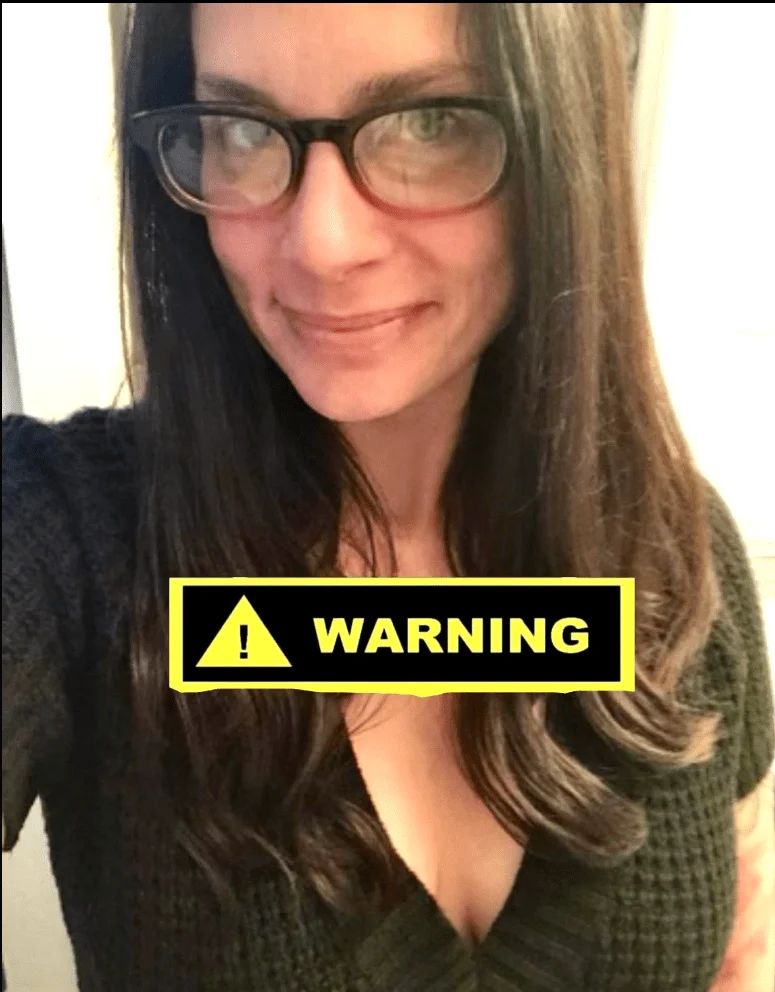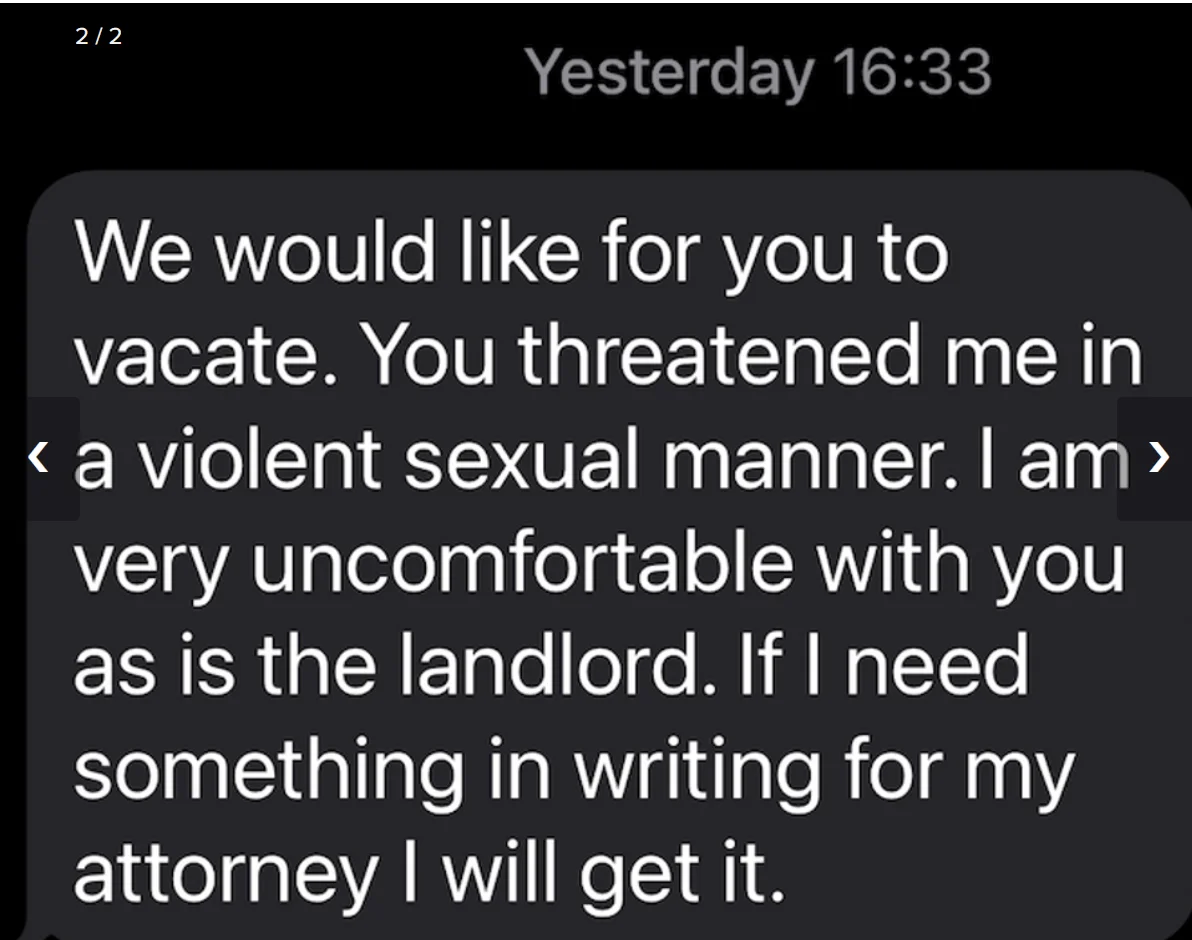- Report: #729455
Complaint Review: Little Miracles Rabbit Rescue - Atco New Jersey
Little Miracles Rabbit Rescue Lmrr Donation Fraud, SCAM!, Animal Abuse, Blatant Lies Regarding Charity and IRS Status Atco, New Jersey
You guessed it, in Florida she did it again. She open a shelter in a garage and started her scam again. She showed plans of a memory garden and bricks you could buy that were engraved for a several hundred dollar donation. She posed as a 501(3)c organization and charity organization. She took money from credit cards that did not belong to her, defrauded the public and again the animals suffered. After several years she again was forced to flee the state of Florida. The rescue at this time was located at 2411 Atwater Drive, North Port, FL 34286.
In 2010 Lmrr returned to NJ, this time in Atco, NJ. She has a Levi ate looking website and sounds semi intelligent if you don't speak to her for too long. The Camden County BoRd of Health put a cease and desist order on Lmrr, but she continues to ignore it. Her fraud is rampant on the internet, she refuses to pay loans, she slanders and defames anyone that questions her. Names, addresses, businesses have all been attacked by her. In addition, she posts under a multitude of aliases, having conversations with herself in order to look legitimate.
Little Miracles Rabbit Rescue is a SCAM! I wish someone, anyone would investigate her! She has broken state and federal laws for over 10 years now. She must be stopped before any more animals are found in her freezer or she takes advantage of elderly citizens by stealing their retirement saving from them!
5 Updates & Rebuttals
Spinach
Westfield,New Jersey,
USA
DOH Official Report
#2Consumer Comment
Fri, September 07, 2012
Little Miracles Rabbit Rescue
2308 Auburn Ave
Atco, NJ 08004
(Township of Waterford, Camden County)
Continuation sheet for inspection conducted on July 24,
2012 by Linda Frese and Renee Cirillo, New Jersey Department of Health, and
James Perry, Camden County Department of Health.
Section 8:23A Deficiency
1.2(a) Facility is in substantial non-compliance with the provisions of N.J.A.C. 8:23A 1 through 13.
1.2(b) A certificate of local health inspection was not prominently displayed at the facility.
1.2(c) The back area of the small animal room is
currently under construction and outdoor enclosures are being
installed. Plans must be submitted to the local health authority for
review and approval for both indoor and outdoor renovations and
improvements before construction and operation begins. A schematic
showing the layout and operation of the ventilation system used for the
isolation room must also be submitted in the plans to the local health
authority. The ventilation in an isolation room must exhaust directly
to the outdoors and must not mix with the air of the general
population.
1.3(a) The layout of the
caging in the main rabbit room creates a nuisance. Some of the storage
items and cages along the outside walls in this room designated as the
projects, are in close proximity to the wooden rabbit enclosures in
the center of the room designated as the condos, restricting movement
of staff during the cleaning process. A cage on the floor, in the corner
of the isolation room containing an animal named Bertucci, was made
inaccessible due to the storage of cages, carriers,
and boxes stacked over 6 feet high on top of his cage. Hindering
immediate access to animals in cages constitutes a nuisance.
1.3(c) Food and hay is stored in large uncovered containers unprotected from contamination.
1.3(d)
A bin containing alfalfa was marked with a sign that said Do Not
Use and was stored with the pelleted food and hay that is used on a
daily basis. Food waste that is deemed
to be contaminated or otherwise unusable must be removed and disposed of.
1.3(e)
The facility had no hot water available at the time of inspection and
the gas was said to be turned off since Friday. The gas company, South
Jersey Gas, was contacted by NJDOH staff and the company confirmed
that the gas supply was shut off to that address, but not due to
construction or repair of any gas lines as stated by facility
management. The reason for the gas shut off by the company was not
disclosed due to privacy protection reasons.
1.3(f)
The clothes dryer exhaust does not appear to be vented to the outdoors
and an accumulation of lint was found around the dryer, on the floors,
walls, and on the supplies kept on the shelf next to the dryer. The
electric outlet above the dryer also contained an
accumulation of lint and cob webs
posing an electrical fire hazard.
Vegetation is overgrown in the
back of the building with wild plant growth approximately 3 feet
tall. Premises shall remain free of accumulations of trash and the
overgrowth of vegetation up to the property line or within
20 feet of the facility.
Note
for 1.4 (c) Although
the air conditioning unit was not working properly at the (not a
deficiency) at time of this inspection, the exhaust fans continued to
work properly and the indoor temperature readings varied between 77
degrees and 80 degrees Fahrenheit. The outdoor ambient temperature
readings were 97 degrees Fahrenheit.
Animals housed at the facility did not appear to be in distress from heat at the time of this inspection.
1.4(d)
Lighting in most areas of the facility was insufficiently distributed
to permit routine inspection and cleaning during the entire
working period. Most of the cages against the walls in all rooms were
dark and inspectors were unable to view inside the enclosures without
the use of a flashlight.
1.4(f) All
interior building surfaces must be impervious to moisture and readily
cleaned. The wood behind the metal cages in the back of the small
animal room is not impervious and is stained with urine.
The floors in the isolation room are stained and are not impervious to moisture. The floor in
the
office area and the main access area between the main rabbit room and
the small animal room contains carpeting. The carpet behind and around
the desk had numerous rabbit droppings on it and large water type
stains. This room smelled of a sour, possibly vomit type odor. Animals
shall
not be permitted on surfaces that are not impervious and
easily cleaned and disinfected.
Carpeting used in animal enclosures must be removed and replaced with
new carpeting when wet or contaminated with excreta, or when a different
animal is placed in the enclosure. Carpeting is not impervious to
moisture and cannot be readily cleaned and disinfected.
Some base edges of the exterior wall that meet the floor are exposed concrete block and are not impervious to moisture.
1.5(e)
Outdoor enclosures are being erected that consist of sand as flooring
material. Surfaces of outdoor enclosures shall be constructed and
maintained so that they are impervious to moisture and may be readily
cleaned and disinfected; run off from outdoor enclosures must be
properly disposed of as required by the municipal sewerage authority.
1.6(a)
Some animal crates and cages are stacked, but are not designed for this
purpose. Debris and waste from upper cages falls into the cages
below. Cages and crates must not be
stacked one on top of the
other unless suitable support structures and barriers are used. The
supports must be able to hold the weight of the uppe cage and prevent
the upper cage from resting on the lower cage. Barriers must be used
between the upper and lower cage to prevent contamination of the lower
cage from debris and waste from the upper cage.
Animal
enclosures are not maintained in good repair. The wooden painted cages
designated as the condos have chewed and worn surfaces and are unable
to be properly cleaned and disinfected. Wooden cages in the front of
the main rabbit room are extensively saturated with urine and so
severely chewed that they can no longer be cleaned, disinfected, or
deodorized. These cages must be removed from the facility.
1.6(a)4.
Animals are unable to remain clean and dry due to the excessive amount
of excreta in their primary enclosures.
1.6(d)
Animals are rotated to a playpen during the cleaning process. At the
time of this inspection, the playpen contained an accumulation of
excrement and debris from other animals. This
playpen was not
cleaned and disinfected between inhabitants. All enclosures,
carriers, and holding pens or runs
must be cleaned and disinfected before another animal is placed in them.
1.7(a)
Hay used as food for the rabbits and pellet type food is not discarded
and replaced on a daily basis as required. Pellet type food is only
given every other day.
1.7(b) Food,
particularly hay, is placed in the litter boxes for the rabbits to eat.
This hay is contaminated with excreta and is not discarded and replaced
on a daily basis as required in 1.7 (a) above. Other food placed on
the floor of enclosures is also contaminated with excreta and needs to
be removed and replaced on a daily basis.
1.7(d)
Hay used as food for the rabbits is placed inside the litter boxes and
quickly becomes contaminated by excreta. Containers of food shall be
accessible to animals and shall be located so as to minimize
contamination by excreta.
1.7(e) Feeding pans are not cleaned and disinfected on a daily basis as required.
1.7(h)
Water bottles are not cleaned on a daily basis. The bottles are topped
up with water when they become less than half full. Receptacles for
water must be cleaned daily.
1.8(a)
Excreta is not removed from primary enclosures often enough to prevent
contamination of the animals contained therein, and to control odors.
At the time of inspection,
enclosures contained an excessive amount of excreta and odors were uncontrolled due to the amount of
urine
and feces in each primary enclosure, including urine and feces
saturated wood pellets used as litter in litter receptacles.
Animals
are not removed from enclosures during the cleaning process. At the
time of inspection, cleaning fluids were poured into the enclosures
containing rabbits, for the purpose of allowing the cleaning fluid to
soak to remove caked on waste materials.
Cleaning staff sprayed cleaning
solutions and vacuumed enclosures while the animals remained in the
enclosures.
1.8(b) Primary enclosures are not cleaned often enough to prevent an accumulation
of
debris and excreta. At the time of this inspection, there was an
excessive amount of excreta and debris on cage floors and resting
benches.
1.8(c) Cages and hard surfaced
pens are not cleaned and disinfected on a daily basis. Floors are swept
and occasionally wet mopped but are not disinfected on a daily basis.
All floors, animal enclosures and other pens or holding areas must be
cleaned and disinfected on a daily basis. Urine encrusted stains in
primary enclosures and litter receptacles must be thoroughly scrubbed to
remove the stains before the final disinfection process.
1.8(d)
All interior surfaces throughout the entire facility were covered in
dust, dirt and debris and not kept clean. All surfaces, including the
area where cleaning supplies are stored and where hay and feed is
dispensed must be kept free of an accumulation of dust, dirt and
debris. Cobwebs, dirt and debris must be
removed from all areas, including ceilings, walls, shelves, electric
outlets, lighting fixtures, stored caging, carriers, etc. Areas around
sinks, wash basins, counter tops, refrigerators, food preparation
areas, and the washer and dryer area must be scrubbed clean and kept in
good repair. Items creating clutter must be either removed or properly
stored to prevent nuisances and to facilitate proper
cleaning throughout the facility.
Areas around primary enclosures
where urine, feces, and debris accumulate must be thoroughly scrubbed
to remove the dried, encrusted urine stains and cleaned and disinfected
on a daily basis.
1.9(a) Records must be
made available regarding the treatment of animals at the facility, such
as daily medical logs indicating the type of treatment provided and the
duration of treatment. Evidence of veterinary examinations and site
visits with documented findings must also be made available to
inspectors. These records are required to document compliance with
the provisions of this act.
1.9(d)
A rabbit named Dante was brought into the facility on 4/18/12 with a
severe leg injury. The leg was splinted by the shelter president on the
day of arrival, but records show that this animal was not seen by a
veterinarian until 5/11/12. There was no evidence
produced at the time of this
inspection that showed the rabbit was provided with at least prompt,
basic veterinary care as required. This rabbit was not at the facility
on the date of this inspection.
1.9(g)
Multiple items, including a dishwasher was stored in the isolation room
at the time of this inspection. A refrigerator used to store medications
for use in the isolation room was blocked by 2 large rolling storage
units.
The isolation room is not to be used for any purpose
other than the segregation of animals with signs of communicable
disease. All items that are being stored in the isolation room must be
removed, cleaned and disinfected, or disposed of if the item can not be
disinfected,
and appropriately stored elsewhere to prevent contamination.
Animals
that were not exhibiting or being treated for signs of
communicable disease were housed in the isolation room at the time of
this inspection. This included wild rabbits that had been raised by a
surrogate mother and were isolated due to stress; a
rabbit named Allyson that was isolated due to pregnancy; Bertucci,
isolated for a bite wound; Lennox, isolated for bad teeth; and a rabbit
brought to the facility for boarding with no name or cage card. There
were no daily treatment logs or other records showing that animals
housed in the isolation room were being treated for a communicable
disease.
If animals need to be segregated for reasons other than communicable
disease,
they must be housed in a different area of the shelter that meets the
needs of the animals, such as a quite area to provide relief from
stress. This would also include animals that are brought into the
shelter and are being observed for a period of time before being placed
with the general population, but are not currently exhibiting signs of
communicable disease.
1.10(a)1. Stray animals
are accepted into the facility although the facility is not licensed as a
pound and the shelter is not contracted with or authorized by any New
Jersey municipality to accept and impound stray animals. Any animal
brought to the facility that is known to be or suspected to be a stray
animal must not be accepted into the facility, but must be turned over
to the contracting animal impoundment facility for the municipality
where the animal was found.
Wild rabbits were found at the
facility at the time of this inspection. Wild animals must be turned
over to a wildlife rehabilitator currently licensed in New Jersey by the
New Jersey Division of Fish and Wildlife.
People bringing
animals to the facility are ordered to sign an owner surrender form even
when the person bringing the animal into the facility states that they
are not the owner of the animal and the animal was found as a stray.
One example is a rabbit named Princess, 8 weeks old,
which arrived at the facility on 6/19/12, ID#PR061912. This practice of falsifying documents must
cease immediately and all stray animals must be handled as stated above.
1.13(a)
Some animals housed at the facility did not have proper records at the
time of this inspection. A cage card on a cage that was empty, but had
not been cleaned, showed that Aerie, ID number 5/9/12, was adopted on
5/19/12. This animal was said to be owned by the
facility president, but when questioned, the
name of the animal as stated on the cage card was unknown and no
records were found for this animal. Inspectors were told that several
animals marked as adopted on the cage card were actually owned by the
facility president.
Animals that are said to have been born at the facility are recorded as stray on the animals records.
All
animals housed at the shelter must have proper records indicating the
date the animal arrived, description of the animal, breed,age, and sex;
name of the owner or person from whom the animal was acquired, and the
final disposition of the animal when the animal dies or otherwise leaves
the facility.
furriestfriends
Ontario,Canada
Copied From LMRR Facebook page
#3General Comment
Mon, May 16, 2011
and this is used with permission - "You can put any organization or
individual under a microscope - But harassing the department of health
until you find a stupid loop hole that they don't have a "plan review"
on file, is hardly grounds to slander an organization and claim they
have been "SHUT DOWN" for "horrible sanitation violations". LMRR IS OPEN
- and adoptions continue, business as usual."
Truth
PUNTA GORDA,Florida,
United States of America
CEASE & DESIST ORDER SERVED TO KRISTIE CORSON FOR LITTLE MIRACLES RABBIT RESCUE CONFIRMED!
#4UPDATE EX-employee responds
Mon, May 16, 2011
Effective May 12, 2011, the Camden County Health Department issued a CEASE AND DESIST order to Christine "Kristie" Lynanne Corson, for the business Little Miracles Rabbit Rescue. The legal paperwork regarding this issue has
been sent to Corson's residence. Until and IF Corson complies to the demands the health department and their multiple subsequent inspections, she is to follow the following directives:
-CHRISTINE LYNANNE CORSON & LITTLE MIRACLES RABBIT RESCUE IS NOT TO TAKE IN ANY MORE ANIMALS OF ANY KIND FOR ANY REASON.
-ANY ANIMAL LEAVING THE PREMISE MUST HAVE A COMPLETE AND LEGAL CERTIFICATE OF HEALTH FOLLOWING EXAMINATION BY A LICENSED AND UP TO DATE VETERINARIAN SAYING THE ANIMAL IS HEALTHY AND FREE OF DISEASE.
So far Corson has played down and out right denied these FACTS because she had the weekend to do so as no one at Camden County Health Department could be reached for comment. Instead of blaming this on the same people you usually do, call and find out for yourself. I wish I could take credit for this but I can not.
To confirm this report call the Camden County Health Department at (856) 374 - 6026. Post what you learn on this note and anywhere else. Learn the TRUTH!
Agatha
voorhees,New Jersey,
United States of America
Shifting The Blame?
#5UPDATE EX-employee responds
Sun, May 15, 2011
Please address the report made and not shift the blame to others. It seems as if you dance around the issues reported and blame others instead. You did not post a rebuttal. You instead shifted the blame and made me very curious as to what other activities this person is involved in.
I have SEEN it. I can help provide documented proof of most of the allegations made against LMRR in the report. I know the history, I have seen the proof and I did my research after what happened to me there. That report seems dead on correct to me. I will be contacting the Health Department to find out if that is indeed correct information.
I hope you can do the same regarding your post in regard to having facts to back it up. I am sure there are plenty of others that can come forward to backup the report made. Can you backup your statements? Sounds like a lawsuit to me.
Facts:
LMRR has had at least 3 separate locations.
*Voorhees location actually has more than reported here.
*The 'Sick Room" existed. The flea spray was kept by the front door.
*LMRRs scams are well documented and I myself am a victim. Where did the money go when the projects were never completed?
*Stated in an interview that she was a certified 501c3 and a charity.
I can go on...but thinking about it gives me nightmares.
patti
United States of AmericaNot true
#6Consumer Comment
Sun, May 15, 2011
This isn a smear campaign organized by a small group of cyber-bullies.
To the "Bunny Justice" crew (Julie Christa Stephens, Ronnie Cyr, Dixie Stone Resnick, Amber Seely Spoerl and a very few others parading under dozens of aliases), please stop posting your vitriol all over the Internet, including here.
For those of you who are friends or unsuspecting followers of these people, PLEASE research and WEIGH the information you're regurgitating. A few dirty cages and poop on the floor of a rabbit rescue is NOT abuse!! When volunteers come to feed/water rabbits, the dishes are going to be empty! An accidental litter can happen to any rescue or foster home!! A picture of a rabbit with a wet butt isn't grounds to shut down a rescue! Photos of a lot of properly housed rabbits don't show the rescuer is a hoarder no matter what the caption says! A ten-year-old incident where rabbits were re-homed is no longer relevant!! These are not 'crimes'!
And especially, letters and posts about personal issues like pregnancy and employment are totally irrelevant to rabbit rescue and you have no business plastering them all over the Internet!
The amount of effort and ugliness put into this campaign is astounding and the tactics are despicable. Its natural to 'cluck cluck' with your friends, but seriously, do you really see anything here that warrants shutting down this rescue? Please think before blindly supporting a group comprised of people with personal grudges launching ridiculously aggressive personal attacks.
This group has reported this girl to the Humane Society, the SPCA, Facebook, income tax, child services, all the media outlets, animal control, the health board, posting personal info, you name it. Very few, if any, rescues can withstand this kind of scrutiny. To Kristie's credit she has been passing a wide array of inspections brought on by this group for months (and in many cases, years) and she has survived all the attempts to derail her. What does that tell you?
It's incredibly distracting to people trying to rescue rabbits (us and Kristie included). It's alienating the entire community and putting all of us in a horribly unprofessional light with the government, media and the public.
And it's a COLOSSAL waste of energy and resources. These huge efforts should be directed to saving lives, not jeopardizing the rabbits in rescue or in need of rescue. Please rethink your involvement!
To others reading this, please ask these people to stop poisoning the rescue pool! STOP THE NEGATIVITY!!



















